Posts Tagged: hover fly
It's Friday Fly Day!
It's Friday Fly Day! And what better day than a Friday to post an image of a syrphid fly nectaring on a tower of jewels, Echium...
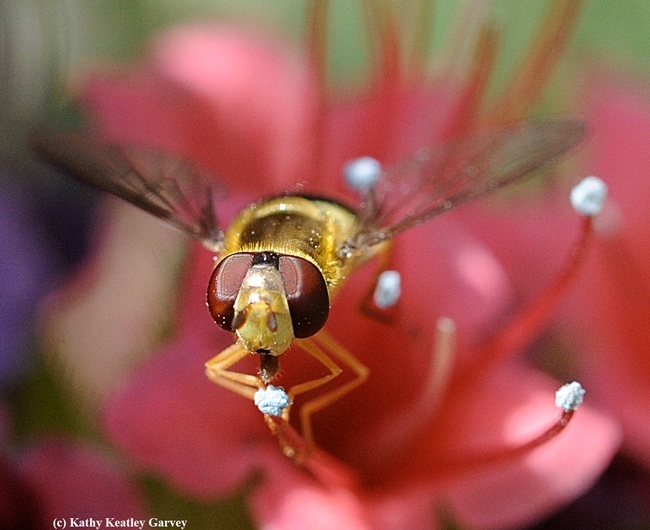
A syrphid fly foraging on a tower of jewels, Echium wildpretii, in a Vacaville garden. (Photo by Kathy Keatley Garvey)
Syrphid Fly in Rock Purslane: When a House Is a Home
When a house is a home... Take the case of a syrphid fly, aka hover fly or flower fly. It's a cold and windy day, and it's tucked in the folds of a...
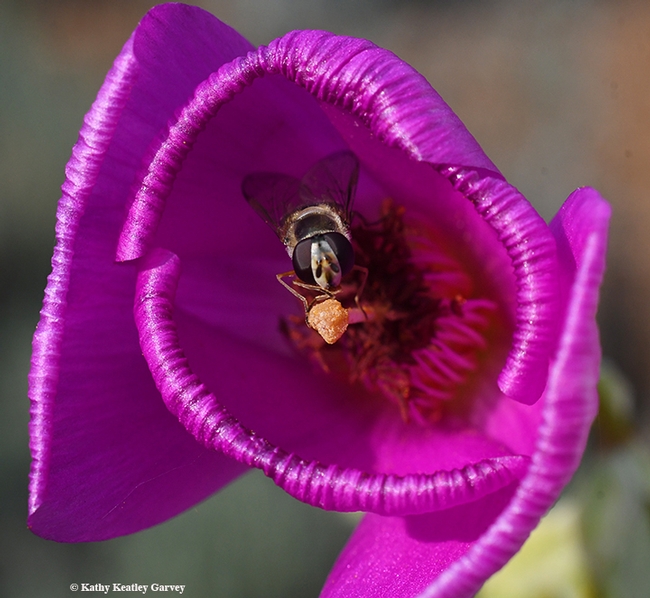
A syrphid fly, tucked in the folds of a rock purslane, Calandrinia grandiflora, sips nectar. (Photo by Kathy Keatley Garvey)
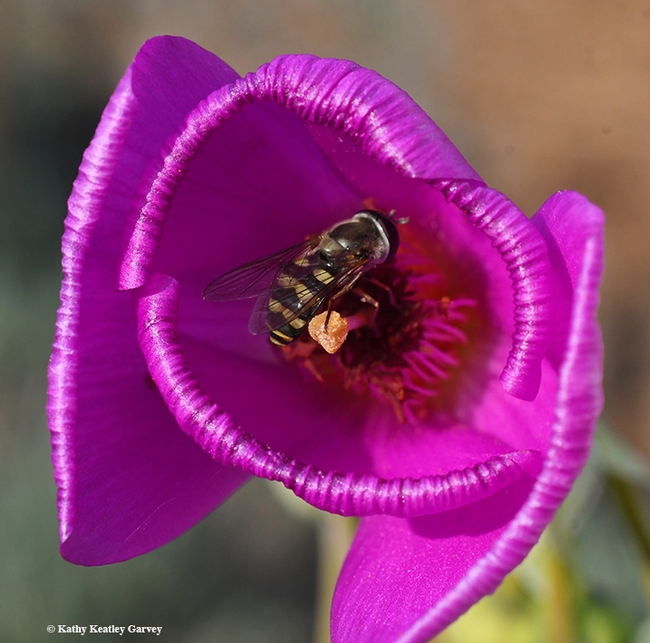
The syrphid fly rotates its body to gather more nectar glean more sun. (Photo by Kathy Keatley Garvey)
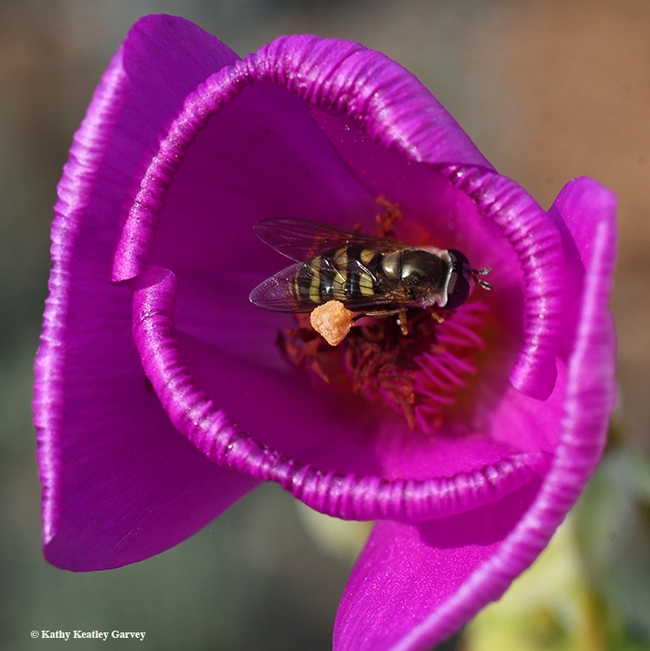
The syprhid is just about ready to take flight. (Photo by Kathy Keatley Garvey)
The Frit and the Fly: Who Wins?
The Frit and the fly...or the butterfly and the fly... That would be the Gulf Fritillary (Agraulis vanillae) and the syrphid fly (family...
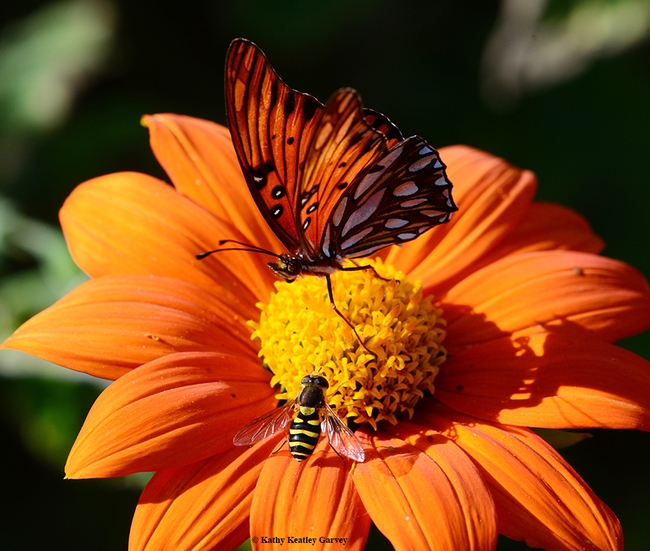
The syrphid fly tries to seek some nectar, but the Gulf Fritillary proclaims "This Mexican sunflower is occupied." (Photo by Kathy Keatley Garvey)
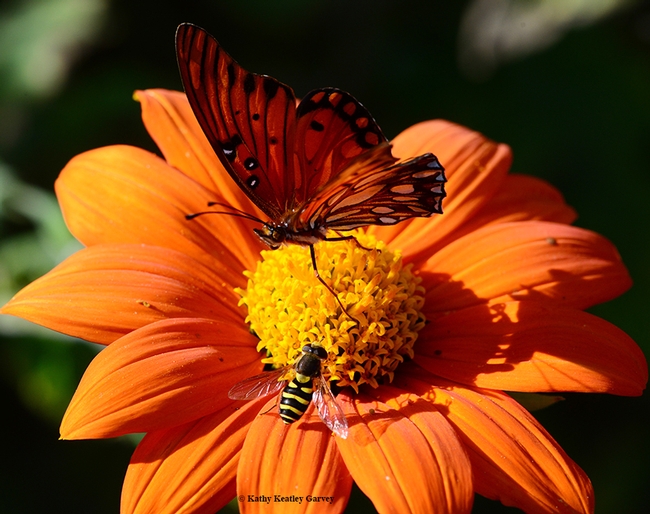
The butterfly begins to spread its wings as the syrphid edges closer to the nectar. (Photo by Kathy Keatley Garvey)
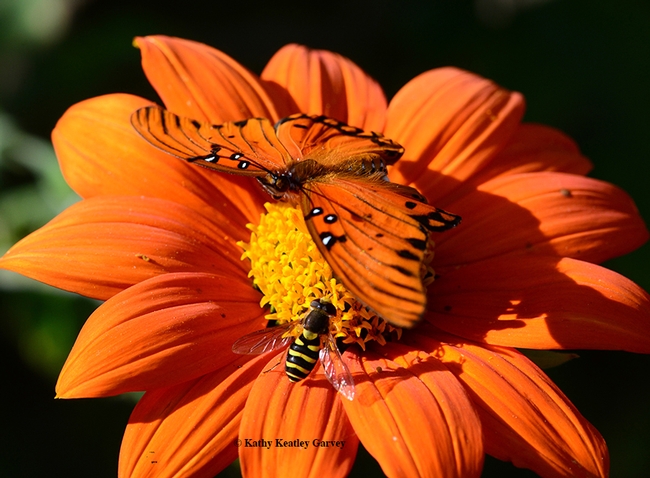
The butterfly spreads and flattens its wings. The syrphid does not move. (Photo by Kathy Keatley Garvey)
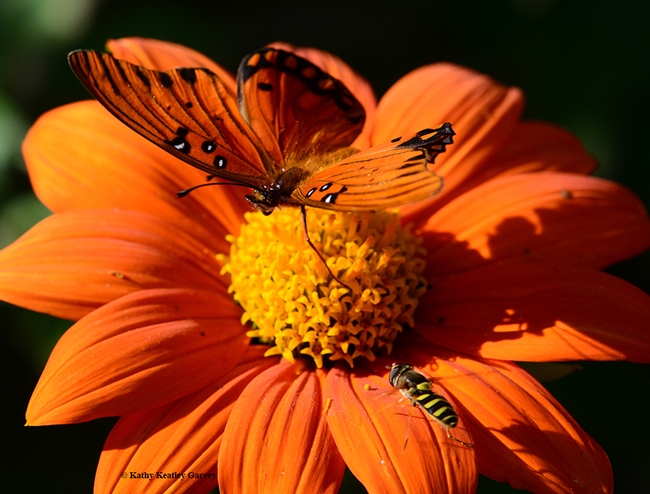
"Maybe if come around from a different direction!" the fly seems to say. (Photo by Kathy Keatley Garvey)
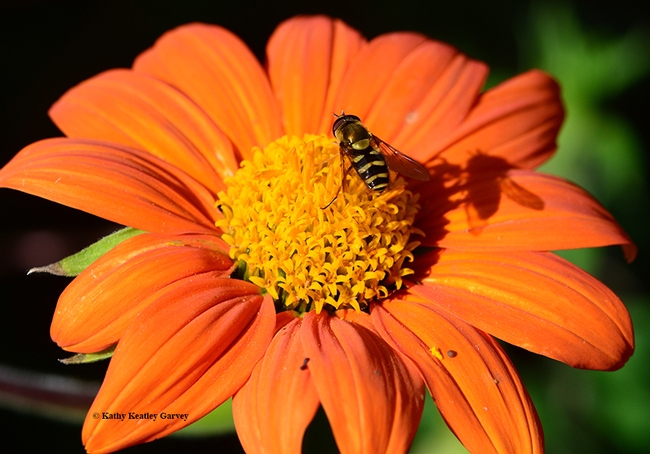
"Ah, all mine!" proclaims the fly. "I scared off the butterfly." (Photo by Kathy Keatley Garvey)
Autumn's Majesty: Tithonia
If there's any flower that should be crowned "Autumn's Majesty," that would be the Mexican sunflower (Tithonia rotundifolia), aka "Torch."A member of...
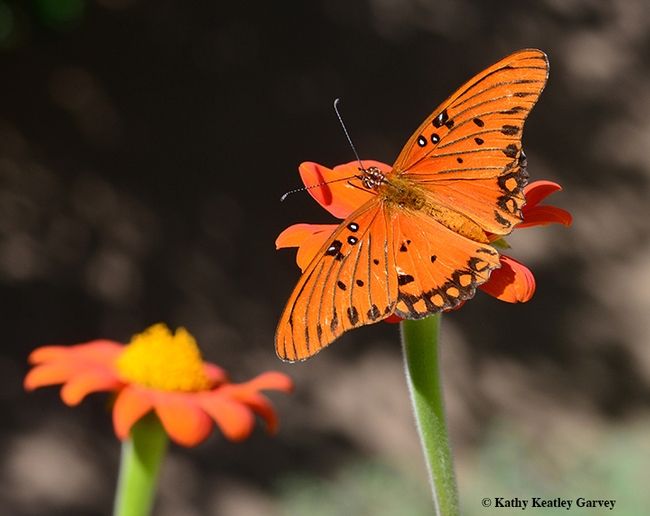
A Gulf Fritillary, Agraulis vanillae, lands on a Mexican sunflower. (Photo by Kathy Keatley Garvey)
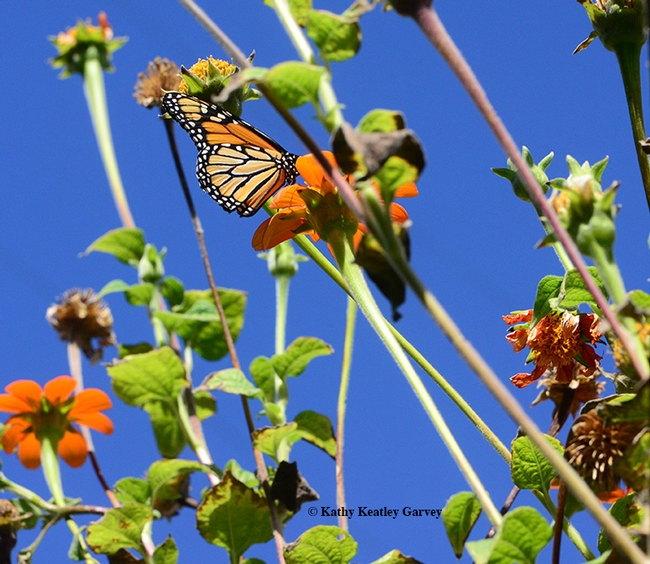
In a sea of nearly spent Mexican sunflowers, a lone migrating monarch, Danaus plexippus, finds food. (Photo by Kathy Keatley Garvey)
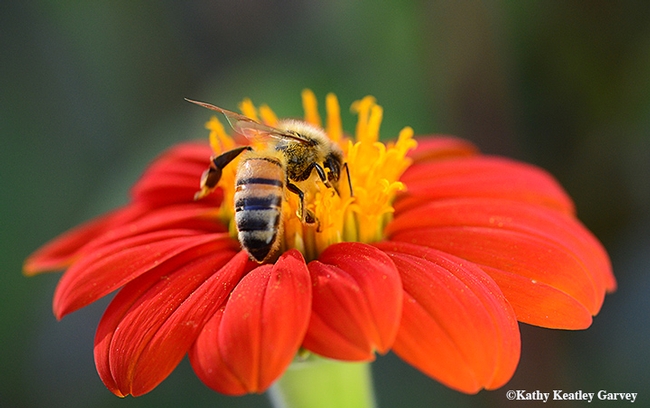
A honey bee, Apis mellifera, takes a liking to the Tithonia, aka Mexican sunflower. (Photo by Kathy Keatley Garvey)
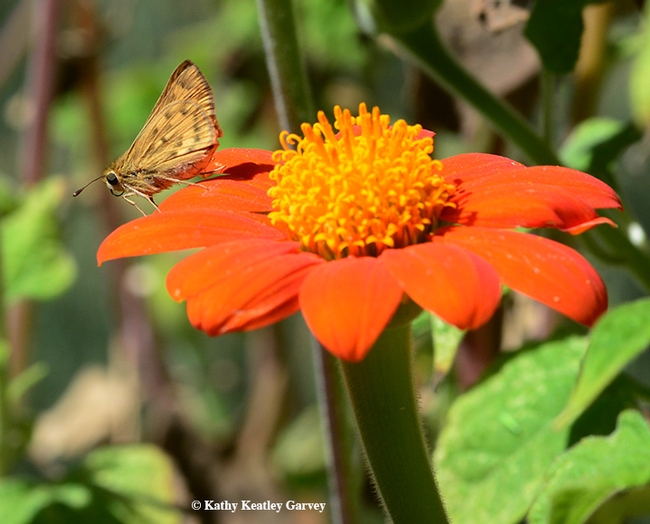
A skipper, family Hesperiidae, hangs out on the Tithonia. (Photo by Kathy Keatley Garvey)
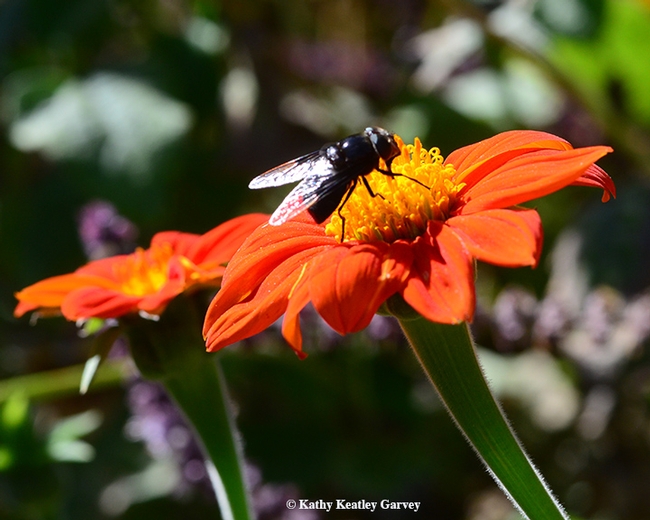
The wings of a black hover fly or syrphid, aka "Mexican cactus fly" (Copestylum mexicanum), gleam in the sunlight. (Photo by Kathy Keatley Garvey)
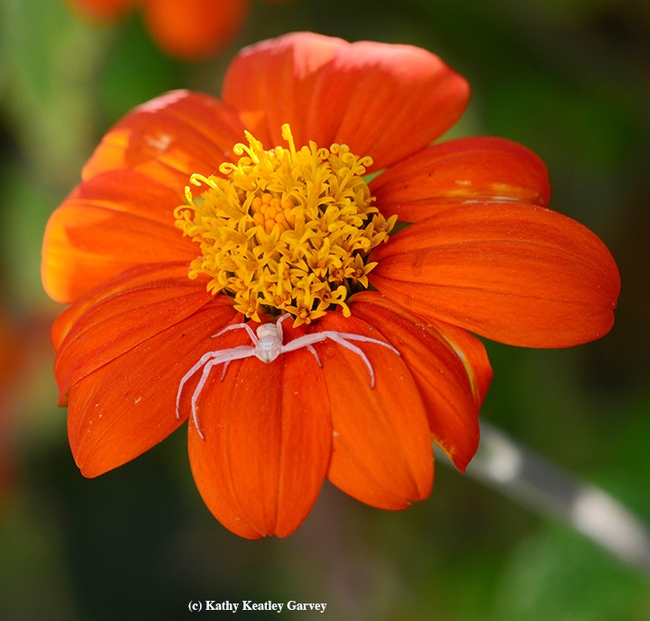
Predators hang out on the Mexican sunflower, too. A crab spider, family Thomisidae, waits for prey. (Photo by Kathy Keatley Garvey)
A Fly, Oh, My!
A fly, oh, my! On the approval scale, they don't rank nearly as high as honey bees, but some are often mistaken for them. Take the Eristalis...
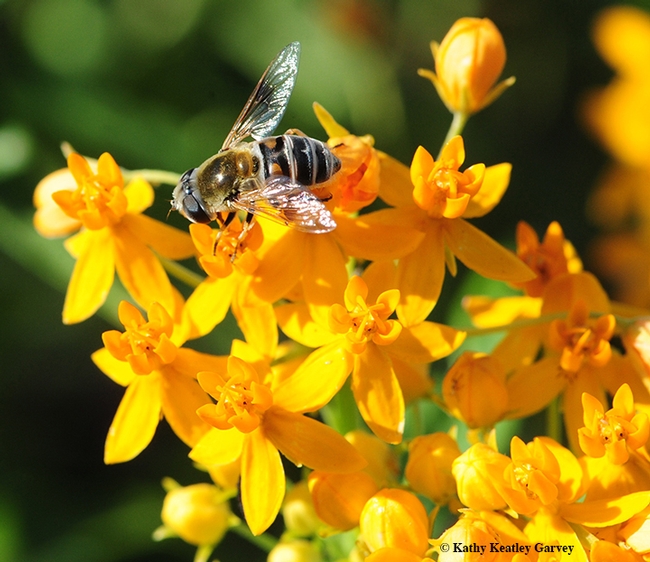
A female Eristalis stipator (as identified by Martin Hauser of the California Department of Food and Agriculture, foraging on tropical milkweed. (Photo by Kathy Keatley Garvey)
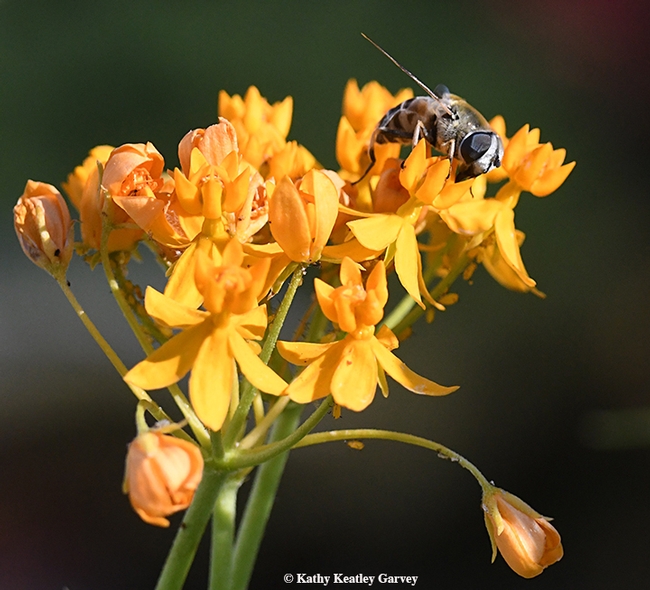
The female Eristalis stipator peers at the photographer. (Photo by Kathy Keatley Garvey)
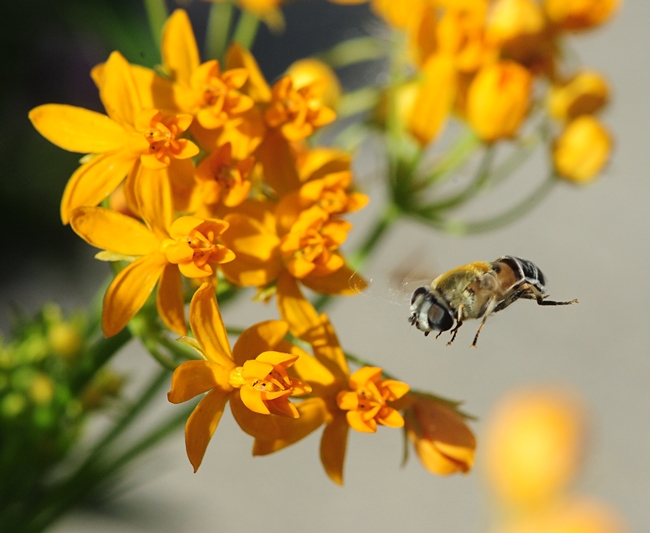
Eristalis stipator in flight. (Photo by Kathy Keatley Garvey)
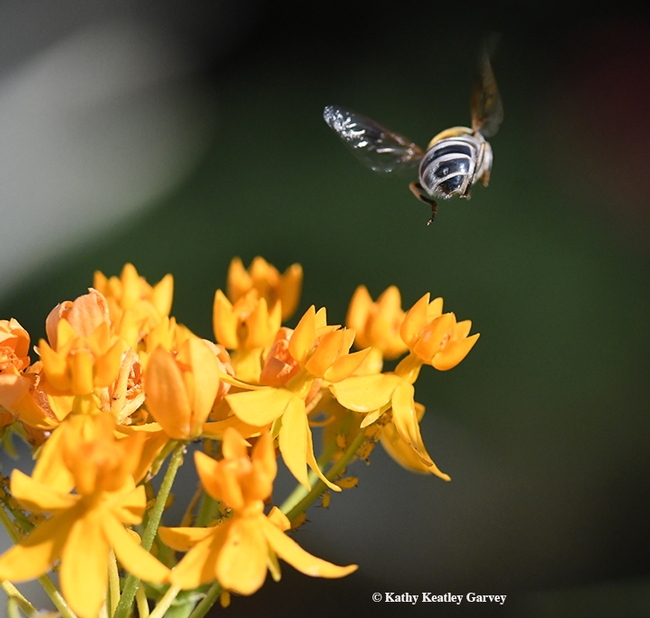
See you! Off flies Eristalis stipator, heading for another blossom. (Photo by Kathy Keatley Garvey)

